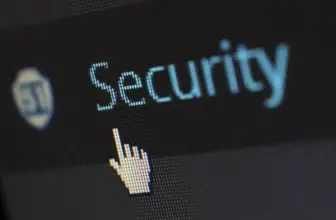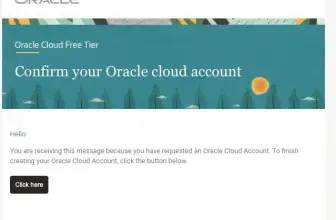
If you’re reading this article, chances are that you’ve heard of the term “data breach.” and trying to understand more about , “What is data breach”. This is the name given to a situation where hackers gain unauthorized access to your personal information. Unfortunately, the number of people who have been affected by these breaches continues to rise.
Table of Contents
1. What is data breach?
Data breach is defined as any unauthorized access to sensitive information about individuals. In simple terms, it is the loss or theft of personal information. A data breach may involve unencrypted data stored electronically (e.g., email, social networking accounts), physical records (e.g., credit card numbers, medical records), or financial transactions (e.g., bank account numbers).
The most common types of breaches are hacking incidents, phishing scams and malware. It’s important to understand the difference between a cybercrime and a data breach. Cybercrimes usually involve malicious activity on the part of hackers, whereas data breaches occur due to negligence.
In fact, in many cases, people don’t even realize that they’ve been breached until weeks, months or years after it has happened. However, a good way to prevent such an occurrence is by having a strong IT infrastructure.
It’s also important to know what the different stages of a data breach look like. These can range from the initial intrusion to how long the attack takes place.
2. Types of data breaches
There are two main categories of data breach. The first category is unintentional. This includes cases where someone accidentally loses sensitive information. For example, a company might lose their password database, so that anyone who knows the passwords can gain unauthorized access.
The second type of data breach involves an act of malice. This means that the person responsible for the incident knew exactly what he was doing.
In most cases, these incidents involve hackers breaking into computer systems. However, there are also other ways that people can get hold of your personal information.
For instance, employees at companies may have access to customer records. If you’re worried about the security of your financial accounts, then you should check the terms and conditions of any service that you use. You should also make sure that you sign up for a free trial before making a purchase.
If your home is broken into, you’ll want to contact the police immediately. Even if you don’t feel like it’s necessary, you need to report this crime to protect yourself from identity theft.
3. How does a data breach happen?
A data breach happens when an individual gains unauthorized access to protected data. Most often, this happens when hackers break into a company’s computer system and steal data. Hackers can gain access to a company’s network by using malware, phishing emails, or weak passwords. Once they have gained access, they can copy, delete, modify, or destroy data.
There are many reasons why someone might gain unauthorized access to your personal information. The most obvious is that hackers have gained access to your computer.
But there are other ways in which this could occur, such as when you visit an unsecured website. This means that the site doesn’t use a secure connection. Hackers can easily steal any sensitive information from you, including credit card numbers and passwords.
Another way that data breaches occur is through human error. If you’re using public computers at work, then you should be careful not to download files onto them. You shouldn’t open attachments in email messages, either.
A third possible cause of a data breach is when employees accidentally delete important files or folders.
Still another possibility is when a hacker gains access to your hard drive and copies all the files on it.
If you suspect that your account has been compromised, then you need to immediately change the password that you used to log into the affected accounts. Also, make sure to keep an eye out for suspicious emails, text messages, phone calls, or websites.
4. Who is at risk?
Any organization that handles private information is susceptible to a data breach. Individuals who handle sensitive information should take extra precautions to protect themselves and their organizations.
Experts have found four main ways in which people gain unauthorized access into an organization’s computer system.
1. Vulnerability exploitation: This occurs when someone gains access to your network through another vulnerability. For example, if you leave your laptop unlocked in a public area, then anyone who finds it could potentially use it to hack into your system.
2. Social engineering: People can also get inside your system by tricking you. For instance, they may pretend to be a friend or family member in order to obtain sensitive information.
3. Physical penetration: Someone might break into your office and steal data or other items. Or, he or she may simply walk away with the hard drive containing all of your files.
4. Insider threat: Employees are the most likely source of a security breach.
5. Are there any laws surrounding data breaches?
Yes, there are laws that cover data breaches. In fact, data breaches are one of the most common types of cyber crimes. Many people have a hard time believing that the government can even track down criminals who break into people’s computers and steal their information. There are many laws that cover how companies must respond to a data breach. If a company loses or steals private information, they must notify affected individuals and law enforcement agencies immediately. Companies must also report the incident to the Federal Trade Commission (FTC) and the Department of Health and Human Services (HHS).
6. What steps can I take to prevent a data breach?
One way that you can protect yourself from such attacks is to update your computer security software regularly. If you don’t do this, then you could end up with malware on your machine, which would make it easy for someone to steal your sensitive information.
Another thing that you should be doing is changing all of your passwords whenever possible. Make sure that you use different combinations of letters and numbers each time. Also, you’ll want to avoid using the same password across multiple accounts.
When you log into your online account, you may also need to enable two-factor authentication (2FA). This is a process where you enter your username and your phone number when logging in. The idea behind this is to ensure that you are really who you say you are.
You may like









